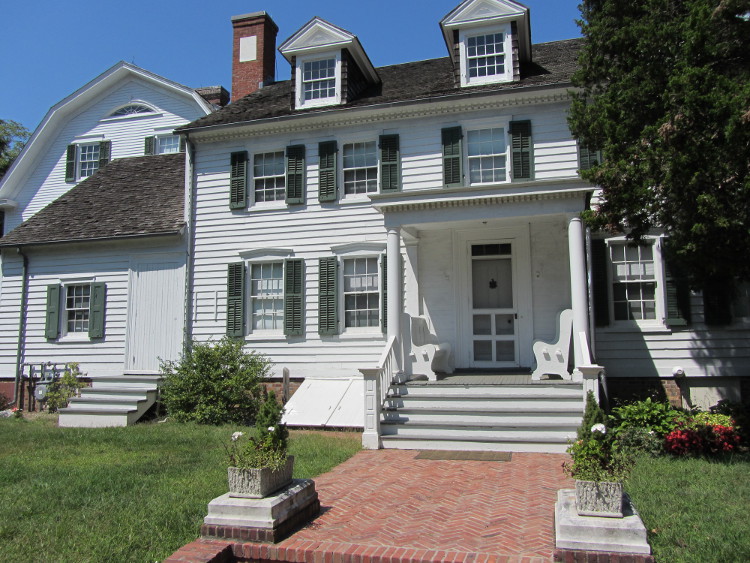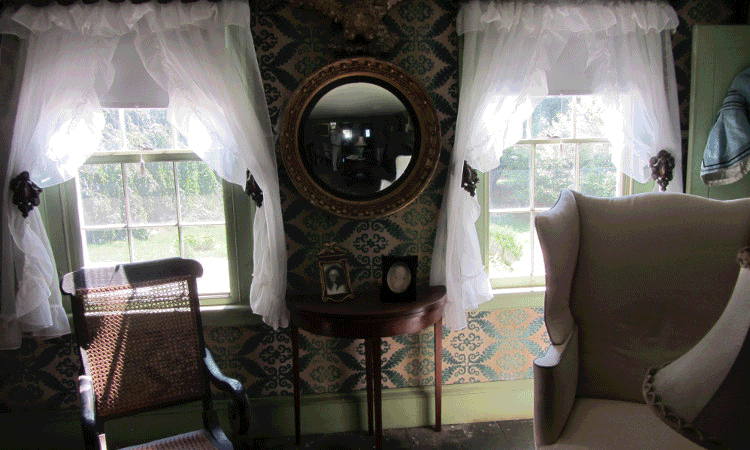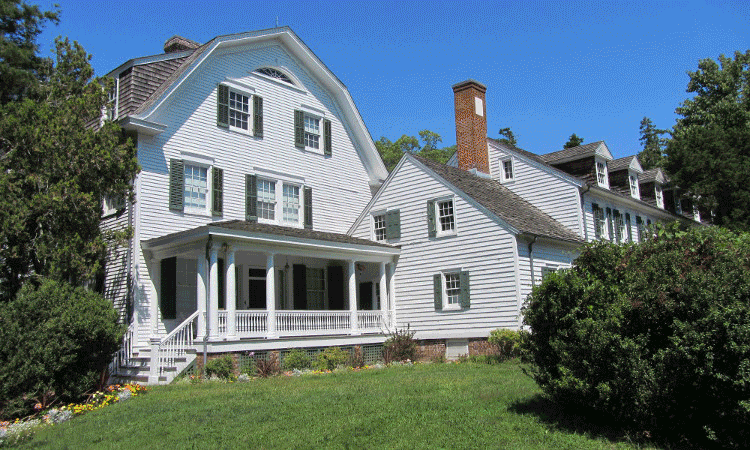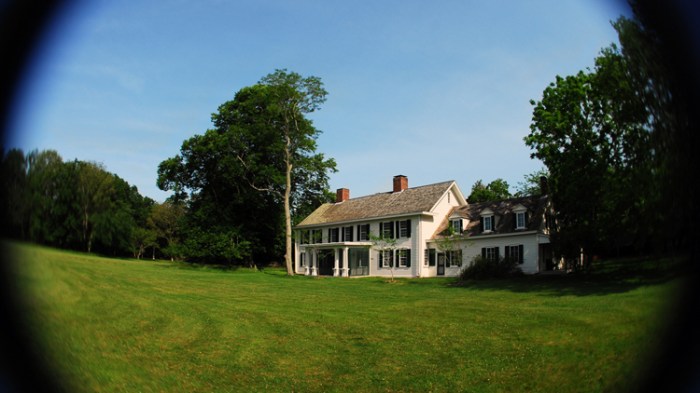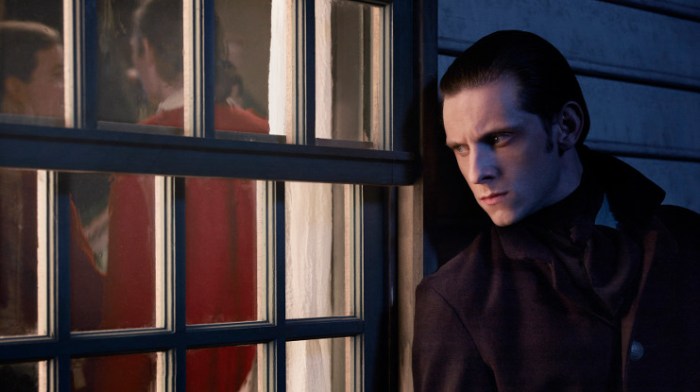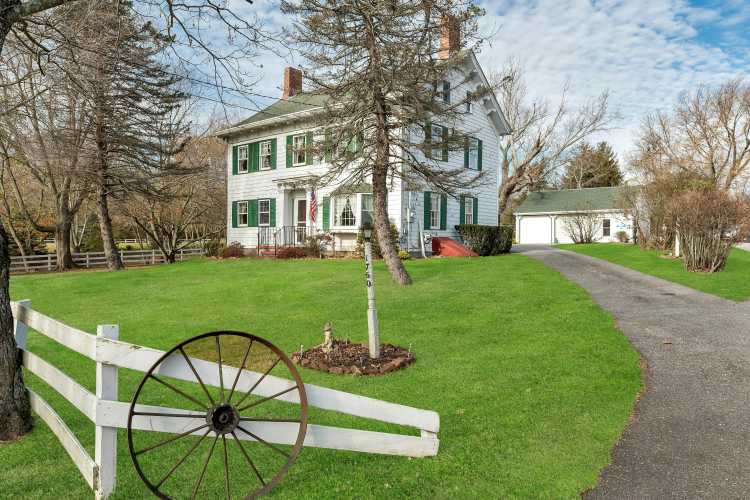Recently one morning the Sagtikos Manor in Bay Shore was a beehive of activity as volunteers were busily sorting through the centuries of family items accumulated over the years in the oldest house in the Town of Islip.
The last owner, Robert David Lion Gardiner, officially moved out in 1963, when the Sagtikos Manor Historical Society, which has a contract with Suffolk County to give tours and help with restoration, was formed. Suffolk only acquired the property in 2002—two years before Gardiner died at his home on Main Street in East Hampton at the age of 93—and the parks department has had its hands full just trying to maintain the house and the grounds, given all its other responsibilities. In fact, the county is about to spend more than a quarter of a million dollars to restore the roof. Meanwhile, the Herculean task of archiving all the material Gardiner left behind is up to the Manor’s historical society.
In one room of the west wing, built in 1902, several women were carefully cataloguing stacks of papers for future reference, while in another room other women were cautiously examining clothing found in closets, suitcases and lockers. It was a day like this not too long ago when Sarah Faye Meurer, the current president of the Sagtikos Manor Historical Society, pulled a well-worn brown manila envelope out of a box of old papers and discovered the original deed inside dating back to 1692, when the Secatogue Indians signed away their rights to the property.
“I had the shakes!” Meuer recalled recently, adding that the deed was in better shape than the envelope that contained it.
Now that precious paperwork—one of the oldest documents on Long Island—is on display at the Suffolk County Historical Society Museum in Riverhead as part of an important exhibit organized by the guest curator, American antiques expert Dean Failey, called “From Manor to Museum: Treasures of Sagtikos Manor.” It’s the first time that artifacts from the manor have been exhibited at the museum.
Kathryn M. Curran, the Suffolk County Historical Society’s executive director, explained their rationale.
“There are spectacular sites all over Suffolk County that are available and open to the public but people have no idea are there,” Curran tells the Press. “It’s part of our mission to make history come to life for people and let them know that these resources are there for them to enjoy.”
She said the idea for the Sagtikos exhibit came from Failey, herself and Richard Martin, director of historic services for Suffolk County Parks.
Known to viewers as a regular on the PBS series, “The Antiques Roadshow,” Failey was the former senior vice president and senior director of American furniture and decorative arts at Christie’s auction house for decades. At the museum recently, he pointed out a trunk on display, open and overflowing with old newspapers dating from 1921 to 1936, that had been found in the attic of the manor just this past year. Inside, it was a collection of 18th century silverware created by LI’s master silversmith, Elias Pelletreau. As Failey wrote in an accompanying note on the display case: “Judging from storage tags and newly discovered inventory lists, the chest was used to transport silver from the family’s winter home in New York City to East Hampton and Sagtikos.”
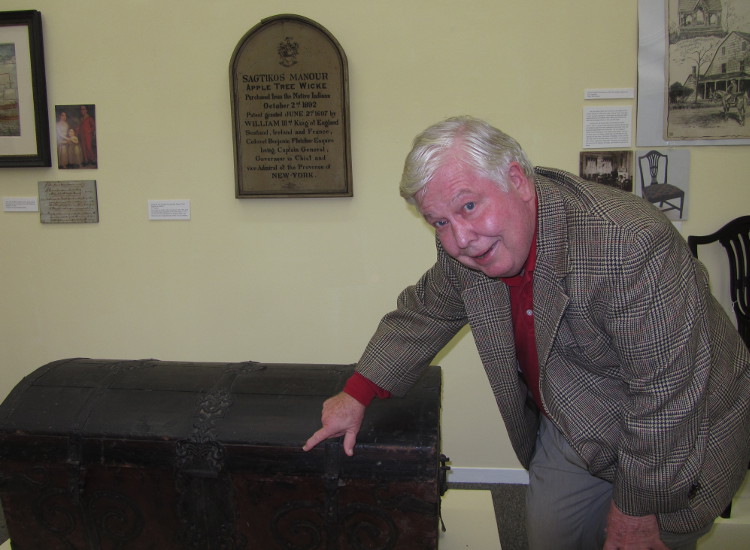
Among the many fascinating objects at the museum is a wrought-iron trunk that Failey is “pretty certain” once belonged to Lion Gardiner when he sailed from the Netherlands to Boston in 1635, making it possibly one of the oldest artifacts on the Island.
“It’s a fancy trunk and it was very expensive,” Failey says. Gardiner bought what later became known as Gardiners Island from the Montauket Indians. The trunk had been at Sagtikos Manor since June 1772 when his descendant, Mary Gardiner, packed it full with her clothes and took it from East Hampton to marry Isaac Thompson, who had bought the Sagtikos Manor in 1758.
The manor exhibit runs through Nov. 8 at the museum in Riverhead. This Sunday in Bay Shore, however, the Sagtikos Manor is holding its annual Fall Festival from 11 a.m. to 4 p.m. The theme is recapturing colonial life from the 1700s.
In April 1790, Gen. George Washington was the house guest of Isaac Thompson as he toured Long Island. The story goes that Washington was offered the best bedroom in the house but he declined since one of its previous occupants had been his arch enemy, British Gen. Sir Henry Clinton. Instead, Washington slept in the bedroom across the hall. Thompson, a judge for this region, had put up with a lot during the occupation, and Washington was there to express his gratitude. Under constant suspicion, Thompson was almost hung by the British troops but they decided to spare him at the last minute because the soldiers figured there’d be hell to pay after they defeated the rebels and word got out that they’d dared to execute one of the king’s judges in the royal colony.
But that wasn’t Thompson’s only close call. One night a redcoat camped outside the manor saw him holding a candle to the window at the head of the stairs and fired at him, thinking he was signaling the enemy. The musket shot missed Judge Thomspon but the ball lodged in a stair step where its traces can still be seen.
The manor still has many rooms that Washington would recognize and many more that he would not. The final addition was added in 1902 with Belle Epoque touches designed by the well-known LI architect, Isaac Green.
In keeping with the Fall Festival theme, members of the 3rd New York Regiment, first organized in 1775, will perform Continental Army maneuvers, come rain or shine. There will also be 18th century arts and crafts for children, old-fashioned games and other activities intended to make history come alive, including demonstrations of colonial domestic practices, Olde English Country dancing and a puppet show.
Related: Read about George Washington’s time on Long Island.
At its peak, the Sagtikos Manor property contained more than 1,200 acres. On maps, the narrow estate looks like a hockey stick. Today all that’s left in the county’s possession is about 10 acres, including the main house, gardens, a family cemetery and a carriage house that may someday house the Sagtikos historical society’s offices and a visitor center. Gardiner County Park, across Montauk Highway from the manor, was once part of the property, giving the Thompsons water access. The manor’s northern edge ran almost to the Smithtown border. When Robert Moses was designing his parkways in the 1920s, he reportedly cut a deal with the family members then living at the estate and that’s why the Robert Moses Causeway and the Sagtikos Parkway spared the manor, which is listed on the National Register of Historic Places.
As people who remember Robert David Lion Gardiner know well, he was a great storyteller, especially when he could talk about his family’s roots. As he told The New York Times once, “The Fords, the DuPonts, the Rockefellers, they are nouveaux riches.” The last heir to bear the name of the family that owned Gardiner’s Island, he liked to call himself “the 16th Lord of the Manor.” In fact, according to Failey, when Gardiner was running for New York State Senate in 1960 as a Democrat, he gave his first campaign speech at the Gardiner Manor Mall in Bay Shore, which he had developed, but got onto a tangent about his ancestors that lasted 45 minutes. By the time he was done, the huge crowd was gone, and he was left with only his lawyer and his campaign manager.
“He was just an incredible character and full of himself—and he got fuller and fuller as time went by!” says Failey, who first met Gardiner 40 years ago when he began researching American antiques.
A colorful photograph of Gardiner posing on a yacht with his wife, Eunice, a British fashion model many years younger than him, is also on display in the Riverhead museum. They look like they’re from central casting for a millionaire couple.
But that image is nothing compared to the full-length portrait of his flamboyant relative, Frederick Diodati Thompson, which dominates the gallery space. The man who commissioned the 1902 addition to the manor had traveled around the world, written a book about it in 1893 that he called In the Track of the Sun, received a medal from the Pope and had become an “honorary imperial Ottoman” in Turkey, where he posed wearing a fez. The fez is in a display case next to Thompson’s pith helmet. Never married, he did have a penchant for peacocks apparently, since the wallpaper he picked out for the 1902 addition is emblazoned with them and a pair of stone peacocks adorns the fountain in the walled-in garden behind the main house.
But it was Robert David Lion Gardiner who kept the Sagtikos Manor Historical Society at bay for the longest time.
“Mr. Gardiner never permitted us upstairs, despite that he’d moved to East Hampton,” explains Norma Meder, the director of docents for the Sagtikos Manor Historical Society. “He had a mall on Sunrise Highway and he’d live in this part of the house when he’d stay over. The society was not permitted upstairs.”
But now that they are allowed free reign, they’re making discoveries almost every week—as the public can see for themselves, thanks to the volunteers’ patient diligence and the skilled eye of Dean Failey.
The curator explained that he wanted to cover the whole chronology of Sagtikos Manor’s inhabitants.
“I wanted to have the objects that spoke about their tastes, their interests, and really give an overview of Sagtikos Manor,” Failey says. “This is a great introduction, and then you go to Sagtikos Manor and you’ll understand it so much better.”
The Fall Festival admission is $7, which is all-inclusive. The manor is about half a mile east from the Robert Moses Causeway. Take Exit RM 2E onto Rt. 27A, the Montauk Highway, in Bay Shore—and the entrance is on the left just across from Gardiner County Park, which was once part of the estate. For more information, call 631-321-6809 or www.sagtikosmanor.com. “From Manor to Museum: Treasures of Sagtikos Manor” is on display through Nov. 8 at the Suffolk County Historical Society Museum, 300 West Main St., in Riverhead.




